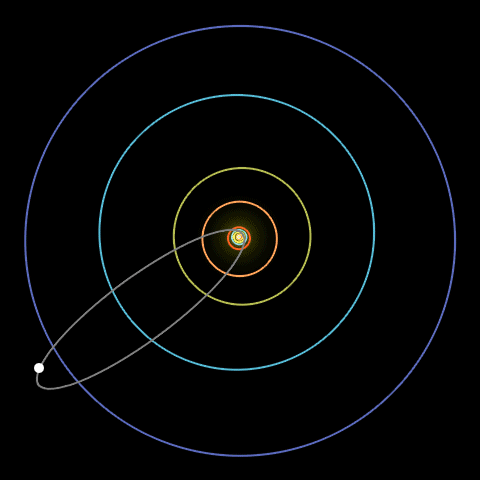Another Bizarre Exoplanet
What does the discovery of a strange new planet mean? From any perspective, it may mean that the universe continues to surprise us with its variety. From a Christian perspective, it could support the idea that a creator-artist who enjoys making different things has left a signature for his work.
Scientists recently found another first-of-its-kind exoplanet orbiting a Sun-like star roughly 100 light-years away. The new extrasolar planet has been called unusual, joining other unusual examples such as:
- Kepler 16(AB) b, a Jupiter-sized planet orbiting around a binary star,
- NLTT 5306 b, the almost star-like planet 56 times more massive than Jupiter that orbits its star once every day-and-a-half, or maybe
- The two super-earths orbiting the pulsar PSR 1257+12. Super-earths appear common among other stars yet are unlike anything in our solar system.
The recent discovery, dubbed HR 5183b, contains more than three times the mass of Jupiter, but its orbit brings it closer to its star than our asteroid belt and farther out than Neptune. And it takes somewhere around 75 years to orbit. Discoveries like this usually lead to a better understanding of how our solar system formed. Here’s how. that might be the case for HR 5183b.
An Elongated Orbit
As the diagrams below show, the orbit of HR 5183b resembles that of Halley’s comet far more than it does Jupiter. Its eccentricity has captured scientists’ interest. All the large planets in the solar system have an eccentricity much smaller than 0.1 (nearly circular orbits). HR 5183b has an eccentricity of 0.84 (highly elongated orbit).1 Thus far, all the known mechanisms for making Jupiter-sized planets at Jupiter-like distances tend to result in orbits with low eccentricity—like those seen in our solar system.
Figures: The Strange Orbit of HR 5183 b (left); credit: Caltech; Halley’s Comet animation (right); credit: Wikimedia Commons.
Size of Orbit
One remarkable feature of this planet relates to the size of its orbit. Normally, the detection of an exoplanet requires at least one full orbit to validate. Although HR 5183b takes somewhere between 45 and 100 years to complete an orbit, astronomers found the exoplanet with observations that started in 1997. HR 5183b spends most of its time far away from its host star, moving at relatively uniform speeds. As it approaches the star, it accelerates with a characteristic signature that a couple decades of observation revealed.
A Star Billions of Years Old
Most of the Jupiter-sized planets orbiting at Jupiter-like distances have been found using the direct detection method (although microlensing techniques find exoplanets in this range also). The direct detection, or imaging, method works best for distant planets around young stars because young planets tend to emit more visible and infrared light than older planets. The fact that HR 5183b orbits a star 7.7 billion years old adds to its unusual nature.
What We Can Learn
The authors of the paper announcing the discovery of HR 5183b suspect that this find represents the first detection of an unexplored class of exoplanets. As scientists seek to understand how this unusual class of exoplanet formed, they will gain better insight into the process necessary to form Earth-like planets. According to the paper, “With this discovery, we continue to uncover the astonishing diversity of planetary systems in our galaxy.”
And it indicates at least one more way that exoplanets differ from our solar system. The more researchers learn about extrasolar planets, the more our planetary system appears to be “unusual,” though not accidental, in its own right.
Endnotes
- Sarah Blunt et al., “Radial Velocity Discovery of an Eccentric Jovian World Orbiting at 18 AU,” The Astronomical Journal. Published ahead of print August 26, 2019, arxiv.org/abs/1908.09925.






